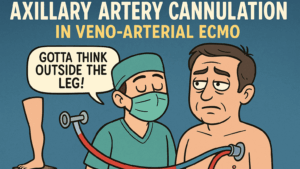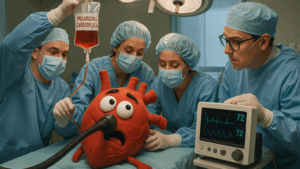In the paper titled “Development of a CO₂ Sensor for Extracorporeal Life Support Applications,” researchers from the University of Bologna and MediCon Ingegneria s.r.l. introduce a groundbreaking CO₂ sensing device specifically tailored for extracorporeal life support (ECLS) applications. ECLS, encompassing procedures such as Extracorporeal Membrane Oxygenation (ECMO), Cardiopulmonary Bypass (CPB), and Extracorporeal Carbon Dioxide Removal (ECCO₂R), demands precise monitoring of CO₂ to assess treatment progress and patient status. This innovative sensor addresses multiple limitations faced by existing CO₂ monitoring technologies in ECLS environments.
Traditional capnometry, a non-invasive method for measuring carbon dioxide (CO₂) in respiratory gases, is widely utilized in emergency and critical care settings. However, its application in ECLS scenarios is complex due to challenges such as continuous gas flow and water vapor condensation at the membrane oxygenator’s (MO) exhaust port. These issues can degrade the performance of standard CO₂ sensors, making them unreliable for ECLS monitoring.
The newly developed sensor leverages mid-infrared (mid-IR) optical technology, utilizing InAsSb/InAs-based LEDs and photodiodes optimized to detect CO₂ at its principal absorption peak of 4.25 µm. This approach allows for accurate CO₂ detection even in the presence of water vapor—a significant advantage in ECLS settings. Unlike conventional systems that rely on broadband light sources and complex optical filters, the new sensor employs a single-channel architecture with simplified design, improved reliability, and cost-effectiveness.
A significant innovation in this sensor is its ability to counteract water vapor condensation, a persistent issue in mainstream CO₂ sensing within ECLS applications. The sensor includes a custom-built heating module designed to maintain a stable temperature around the optical elements, effectively preventing condensation. However, temperature fluctuations introduced by this heating system can influence the sensor’s accuracy due to the temperature sensitivity of LED and photodiode components.
To address this, the team implemented a novel temperature control algorithm. This algorithm generates periodic, controlled thermal cycles and synchronizes signal acquisition at consistent temperature conditions. As a result, the sensor captures data only under stable thermal conditions, enhancing the accuracy and repeatability of measurements. Experimental validation confirmed that this method mitigates the negative effects of temperature fluctuations, improving signal stability and enabling accurate CO₂ quantification.
The CO₂ sensor platform is composed of two integrated sections: one for measuring gas flow (GF) using a high-accuracy mass flow sensor and another for measuring CO₂ concentration in the MO exhaust. This dual measurement capability allows the calculation of the CO₂ removal rate (VCO₂), a critical parameter for evaluating the effectiveness of ECLS procedures. The flow sensor is strategically placed at the MO’s inlet to avoid condensation-related errors and to provide direct feedback on sweep gas flow.
Extensive validation was conducted both in laboratory and in vivo settings. Laboratory tests involved calibrating the sensor using controlled gas mixtures and comparing results to a clinically approved gold-standard device. The sensor demonstrated high accuracy, with error margins within ISO 80601-2-55 standards. In vivo testing using porcine models undergoing ECMO confirmed the sensor’s clinical robustness. CO₂ concentration, gas flow, and VCO₂ readings closely matched those of reference devices, with minimal deviations.
The study also underscores the inadequacy of existing respiratory CO₂ sensors like Masimo EMMA™ and Medtronic Microcap™ for continuous-flow ECLS conditions. These systems, intended for intermittent respiratory monitoring, are not suitable for integration with ECLS equipment due to their side-stream sampling design, susceptibility to condensation, and lack of continuous measurement capability.
In contrast, the newly developed sensor’s Main-Stream design avoids these pitfalls. Its heating system not only prevents condensation but also enhances operational durability in high-humidity environments typical of MO exhaust. Furthermore, the sensor’s compatibility with RS-485 communication protocols allows seamless integration with existing ECLS monitoring infrastructure.
In conclusion, the sensor presented in this study provides an accurate, reliable, and clinically viable solution for real-time monitoring of CO₂ in extracorporeal life support procedures. With CE certification already achieved, it is currently being deployed in intensive care settings for ECMO and ECCO₂R therapies. The device’s simplicity, robustness, and validated performance position it as a transformative tool in the management and optimization of critical care patients requiring extracorporeal support.
Study ranking = 4 (high quality). This study includes laboratory validation and in vivo testing with strong technical and theoretical underpinnings. While not a randomized clinical trial, the comprehensive engineering validation and CE approval support its clinical relevance.







